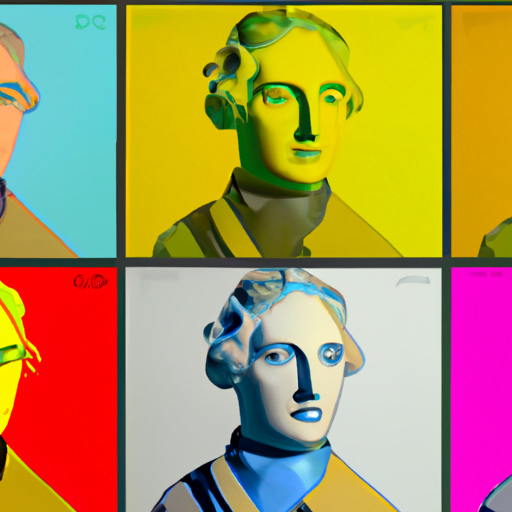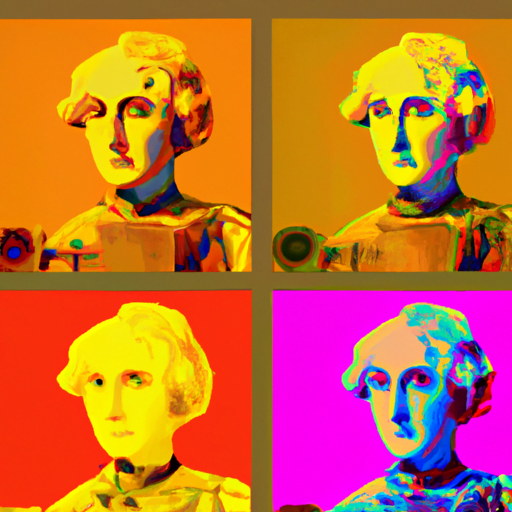
-
Table of Contents
- Cognitive Design: Utilizing AI for Cognitive Load Optimization
- Understanding Cognitive Load
- The Role of AI in Cognitive Design
- 1. Personalized Content Recommendations
- 2. Natural Language Processing
- 3. Intelligent Automation
- 4. Adaptive Interfaces
- Case Studies: AI in Cognitive Design
- 1. Google Search
- 2. Duolingo
- 3. Grammarly
- The Future of Cognitive Design with AI
- 1. Emotion Recognition
- 2. Predictive Design
- 3. Multimodal Interfaces
- Summary
Cognitive Design: Utilizing AI for Cognitive Load Optimization

In today’s fast-paced digital world, where information overload is a common phenomenon, it is crucial for designers to create user experiences that are not only visually appealing but also cognitively optimized. Cognitive load refers to the mental effort required to process information, and reducing cognitive load can significantly enhance user engagement and satisfaction. With the advancements in artificial intelligence (AI), designers now have a powerful tool at their disposal to optimize cognitive load and create seamless user experiences. In this article, we will explore the concept of cognitive design and how AI can be utilized to optimize cognitive load.
Understanding Cognitive Load
Cognitive load theory, developed by John Sweller in the 1980s, suggests that humans have limited cognitive resources and can only process a certain amount of information at a time. When these resources are overloaded, it leads to cognitive overload, resulting in decreased learning, comprehension, and overall user experience. Cognitive load can be divided into three types:
- Intrinsic Load: The inherent complexity of the task or information being processed.
- Extraneous Load: The unnecessary cognitive load imposed by the design or presentation of information.
- Germane Load: The cognitive load that contributes to learning and understanding.
Designers need to focus on reducing extraneous load and optimizing germane load to enhance user experience and facilitate effective information processing.
The Role of AI in Cognitive Design
Artificial intelligence has revolutionized various industries, and its potential in cognitive design is immense. By leveraging AI technologies, designers can analyze user behavior, preferences, and cognitive patterns to create personalized and optimized user experiences. Here are some ways AI can be utilized for cognitive load optimization:
1. Personalized Content Recommendations
AI algorithms can analyze user data, such as browsing history, search queries, and social media interactions, to provide personalized content recommendations. By understanding user preferences, AI can reduce cognitive load by presenting relevant information and filtering out unnecessary noise. For example, streaming platforms like Netflix and Spotify use AI algorithms to recommend movies, shows, and songs based on user preferences, reducing the cognitive effort required to find suitable content.
2. Natural Language Processing
Natural Language Processing (NLP) is a branch of AI that focuses on understanding and processing human language. By utilizing NLP techniques, designers can create interfaces that understand and respond to natural language inputs, reducing the cognitive load associated with learning complex command structures or navigating through complex menus. Virtual assistants like Siri, Alexa, and Google Assistant utilize NLP to provide seamless user experiences by understanding and responding to voice commands.
3. Intelligent Automation
AI-powered automation can significantly reduce cognitive load by automating repetitive and mundane tasks. By offloading these tasks to AI systems, users can focus on more complex and meaningful activities. For example, email clients like Gmail use AI algorithms to automatically categorize and prioritize emails, reducing the cognitive load of managing a cluttered inbox.
4. Adaptive Interfaces
AI can enable the creation of adaptive interfaces that dynamically adjust based on user behavior and preferences. These interfaces can optimize cognitive load by presenting information in a way that aligns with the user’s mental model and reduces the need for cognitive effort. For instance, e-commerce platforms like Amazon use AI algorithms to personalize product recommendations and dynamically adjust the layout based on user browsing behavior.
Case Studies: AI in Cognitive Design
Let’s explore some real-world examples of how AI has been successfully utilized for cognitive load optimization:
1. Google Search
Google’s search engine utilizes AI algorithms to understand user intent and provide relevant search results. By analyzing user behavior and search patterns, Google reduces cognitive load by presenting the most relevant information at the top of the search results. The “People also ask” and “Related searches” features further assist users in finding the desired information without additional cognitive effort.
2. Duolingo
Duolingo, a popular language learning platform, uses AI to personalize the learning experience for each user. By analyzing user performance and progress, Duolingo adapts the difficulty level of exercises, introduces new vocabulary at the right pace, and provides timely feedback. This adaptive approach optimizes cognitive load by ensuring that users are neither overwhelmed nor bored, leading to improved learning outcomes.
3. Grammarly
Grammarly, an AI-powered writing assistant, helps users improve their writing by providing real-time suggestions for grammar, spelling, and style. By automating the proofreading process, Grammarly reduces the cognitive load associated with manually reviewing and editing written content. Users can focus on their ideas and thoughts while Grammarly takes care of the technical aspects of writing.
The Future of Cognitive Design with AI
The integration of AI into cognitive design is still in its early stages, and the future holds immense potential for further advancements. Here are some potential developments we can expect:
1. Emotion Recognition
AI algorithms can be trained to recognize and understand human emotions based on facial expressions, voice tone, and other cues. By incorporating emotion recognition into cognitive design, interfaces can adapt and respond to users’ emotional states, reducing cognitive load and enhancing user engagement. For example, a virtual assistant could adjust its responses based on the user’s mood, providing empathy and support when needed.
2. Predictive Design
AI can analyze user behavior and preferences to predict their future actions and needs. By leveraging predictive analytics, designers can create interfaces that proactively anticipate user requirements, reducing the cognitive effort required to find information or perform tasks. For instance, a smart home system could learn a user’s daily routine and automatically adjust lighting, temperature, and other settings accordingly.
3. Multimodal Interfaces
AI can enable the development of multimodal interfaces that combine different modes of interaction, such as voice, touch, and gesture. By providing multiple input and output channels, multimodal interfaces can reduce cognitive load by allowing users to choose the most natural and efficient way to interact with a system. Virtual reality (VR) and augmented reality (AR) technologies are already exploring the potential of multimodal interfaces.
Summary
Cognitive design, focused on optimizing cognitive load, plays a crucial role in creating user experiences that are engaging, efficient, and enjoyable. With the advent of AI, designers now have powerful tools to analyze user behavior, personalize content, automate tasks, and create adaptive interfaces. Real-world examples like Google Search, Duolingo, and Grammarly demonstrate the effectiveness of AI in reducing cognitive load and enhancing user experiences. The future of cognitive design with AI holds even more exciting possibilities, including emotion recognition, predictive design, and multimodal interfaces. By leveraging AI technologies, designers can continue to push the boundaries of cognitive optimization and create user experiences
